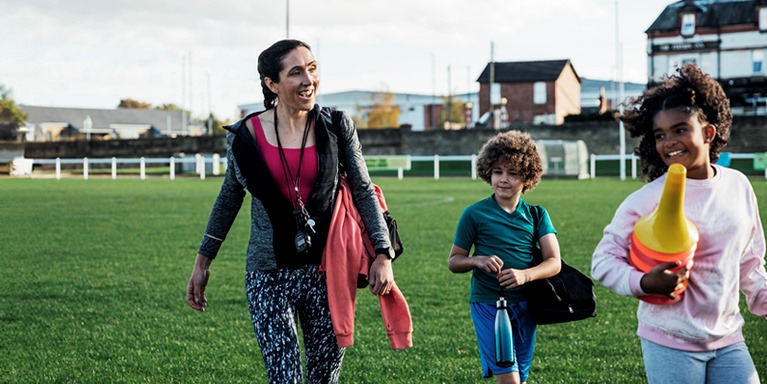Local fundraising
Become a key part of the community
Local fundraising is often the simplest way to bring in funds. It may just be in small amounts. Don’t forget though – these small amounts can help keep things ticking along. This means you can focus on the things that make your organisation special.
Local fundraising is most effective if your community sees you as a core part of it. They need to see that you’re willing to contribute – that you’re not just about asking them for support. Your community isn’t just the area in which you operate, though. It can also include the people and organisations you work with. It's your online community too.
Don’t be afraid to pick up the phone to introduce yourself to the people and organisations in your community. The bigger your network, the more chances you have to collaborate.
Contribute to your community
Why not organise a free event for your community? Ask for donations and you’ll likely cover your costs anyway. A great way of doing this is to organise a fair or festival, either on your premises or in partnership with a local venue.
People are often happy to donate their unwanted toys, books and clothes that you can sell. Don’t have the resources to set up stalls yourself? Sell stalls to local businesses and just take care of the tea and biscuits. Don’t forget to invite the local paper and your MP.
Want to do this but don’t have your own venue? You can still host an event. Speak to your local Councillor about using a public space like your local park. A local venue may be willing to give you a space for free, too.
Support others at their events and programmes
This shows you’re part of the community. It shows your organisation in a good light and encourages support in return. You could run a stall at someone else’s fair, speak at an event, join a committee or get involved in the local carnival. If you’re going to collect money outdoors, check with your Local Authority as you might need a permit to do so.
Form close relationships and partnerships with the organisations around you, to share effort and expenses. This also gives you access to new networks of people.
Make it easy for people to donate
When you ask your local community for donations, be welcoming, inviting and give them options. Think beyond donation buckets. Options like card donations, links or QR codes can make it easy for people to donate online.
These might send people to a fundraising page like JustGiving or GoFundMe. There are also options for simple text-in donations. Bear in mind that these services may not be free. They usually take a fee or a percentage of any donations.
Take advantage of any public space you have
Use a fence, window, or other space to tell people what you do and what you need. How about outdoor banners? These can be cheap to produce. Some manufacturers will even throw in simple designing for free if you have your own templates and logos. If you don’t own this kind of space, speak to organisations in your area. They may be willing to let you put up some posters or banners.
Make everything look coherent
All your materials should share a similar theme/design. That way, when people see a poster in a shop or a leaflet through their door, they’ll instantly connect it with your organisation.
Let your community know that you need their support
Make it as easy as possible for people to support you. Consider using words like ‘critical’ and ‘vital’. These may seem scary to you, but a potential donor is more likely to respond if they believe you really need their support.
Use clear calls to action
People will understand a request like ‘donate £2 now by texting DONATE to xxx’. They know what ‘drop off your empty drink cans here, we can recycle them for cash’ means. These requests tell people exactly what they can do to help.
If you can, tell people what their donations will achieve. For example, say ‘donate to repair our roof’. This resonates with donors as it adds meaning to their gift. It also makes the task feel more achievable.
People may be less keen to donate if you’re nameless and faceless.
